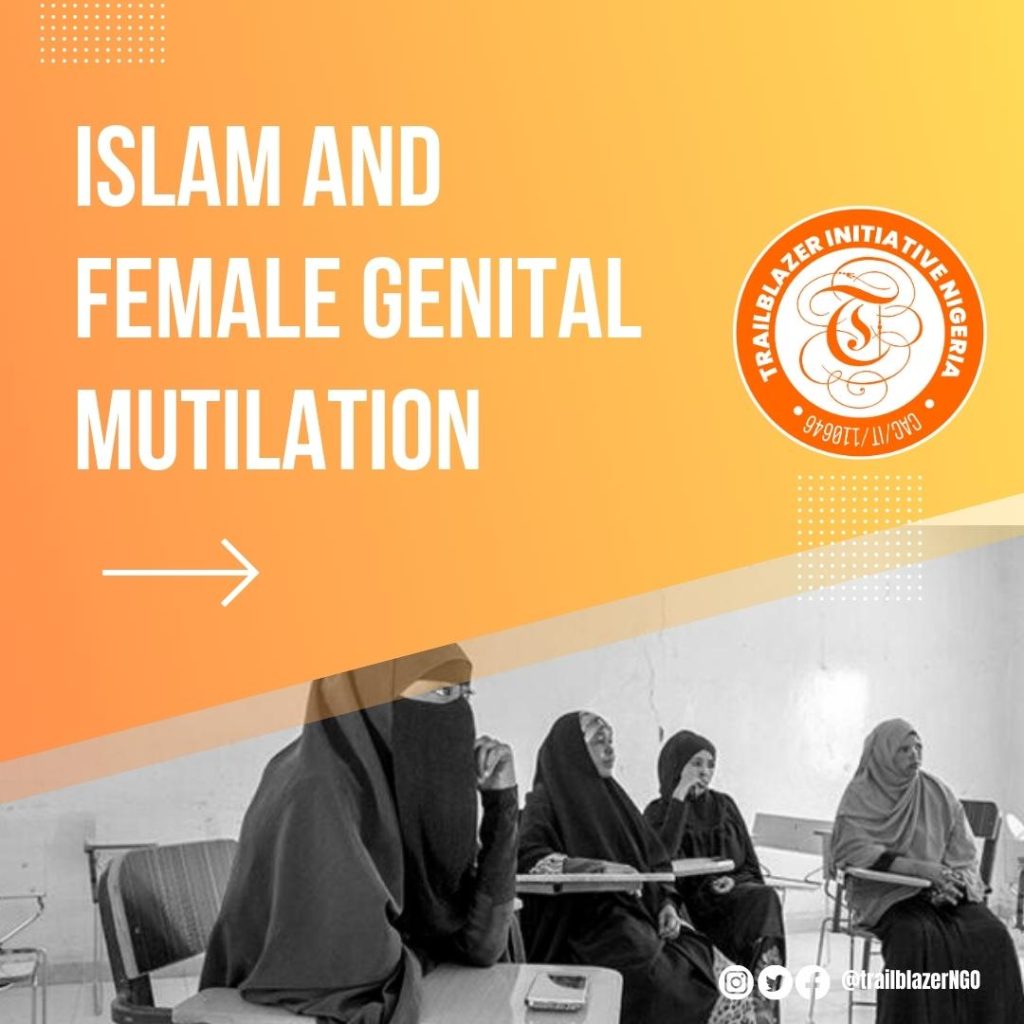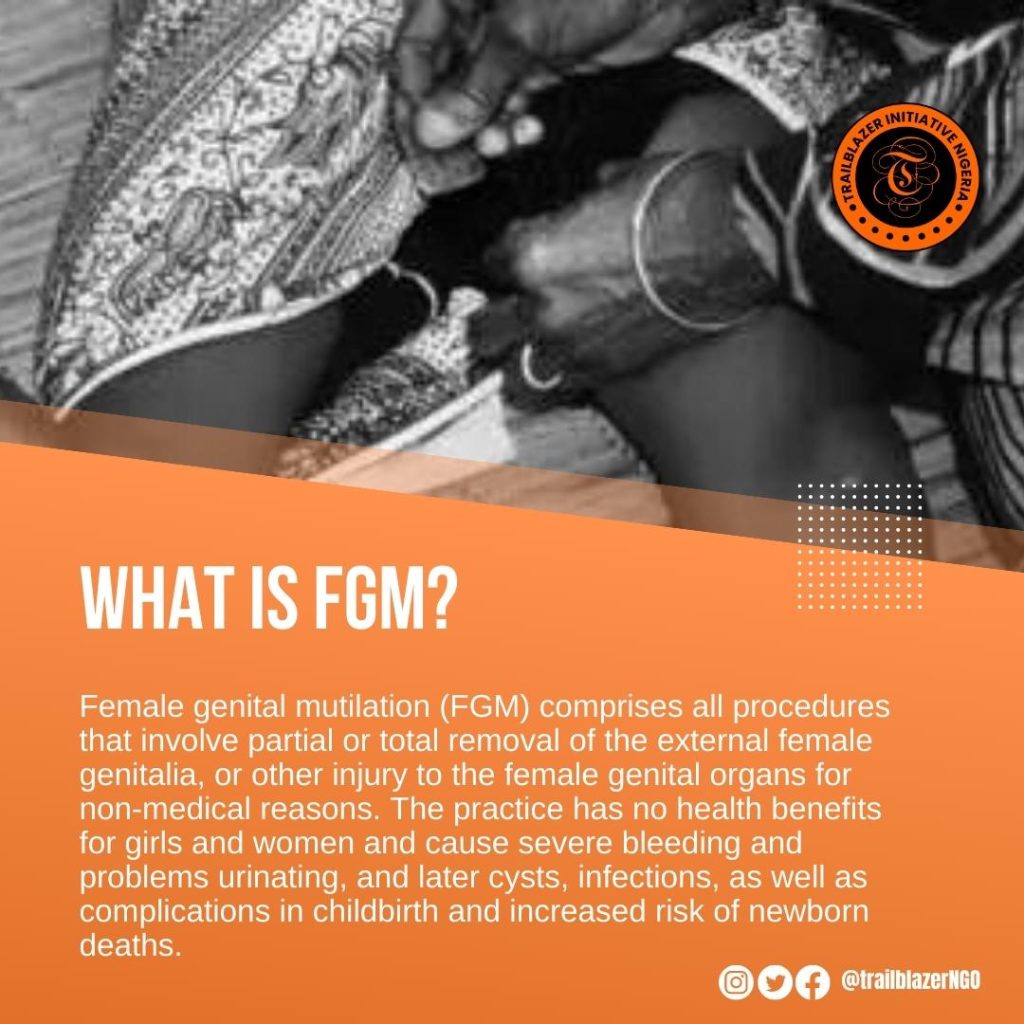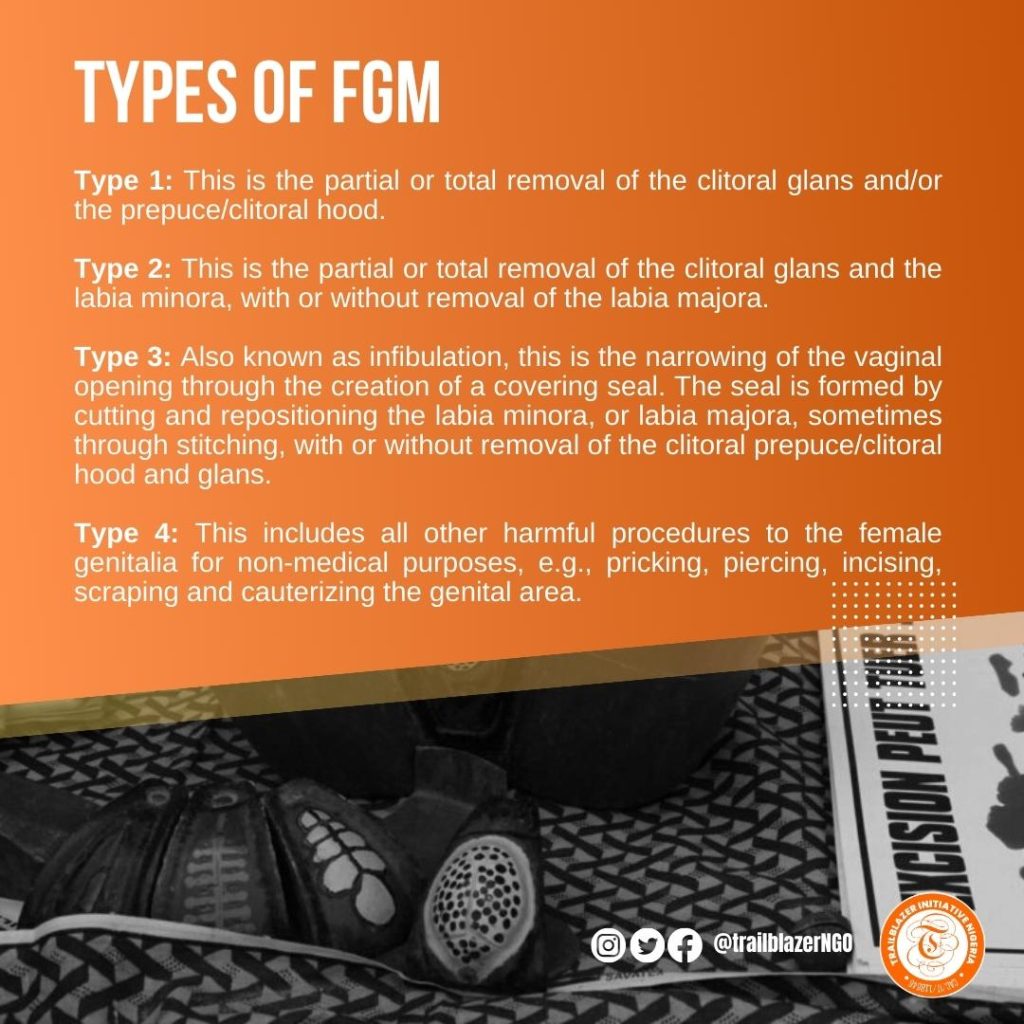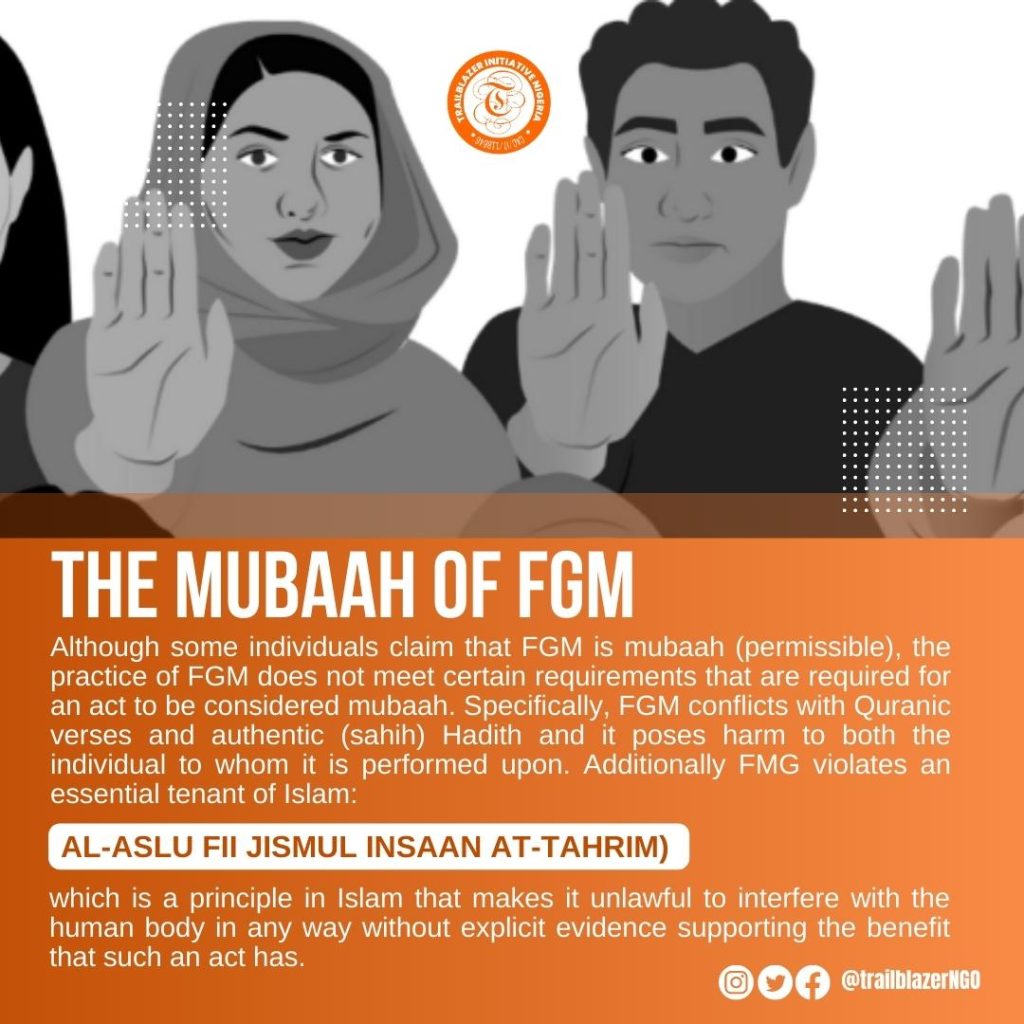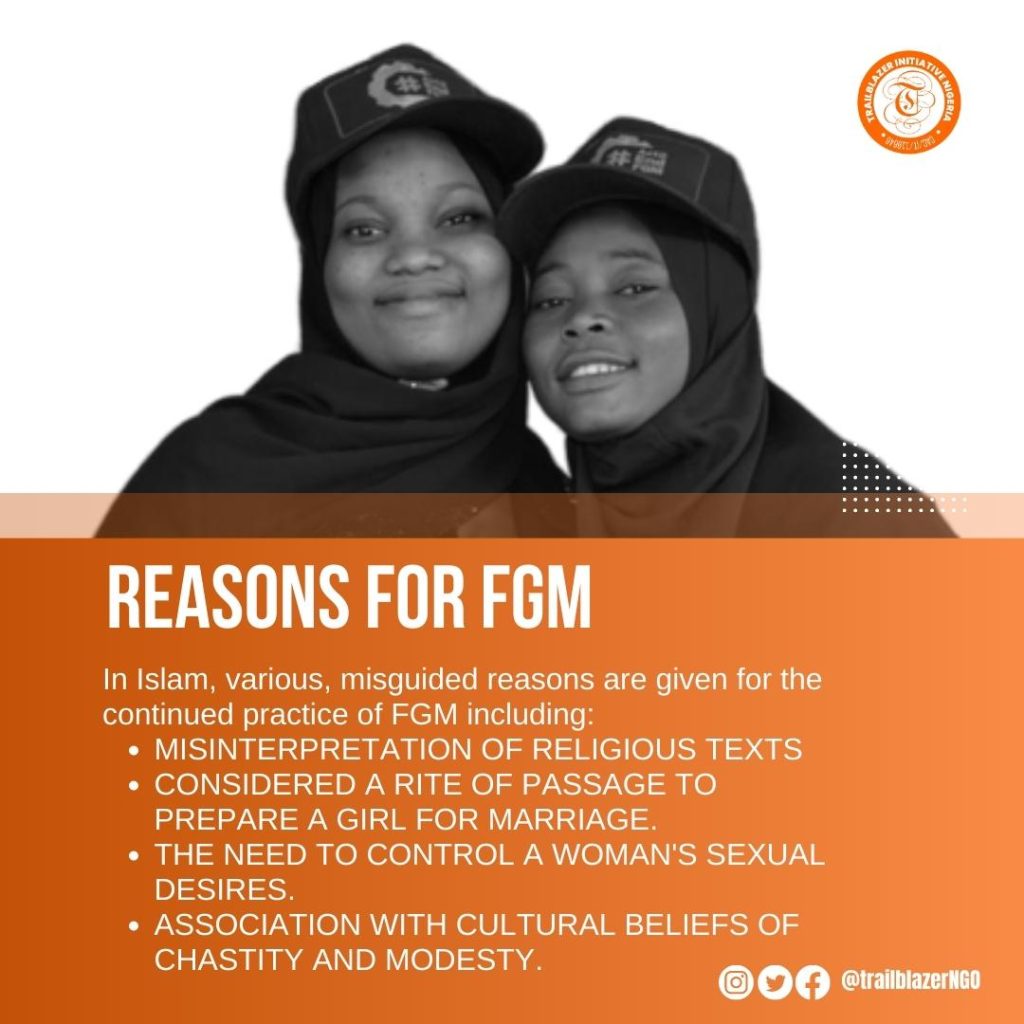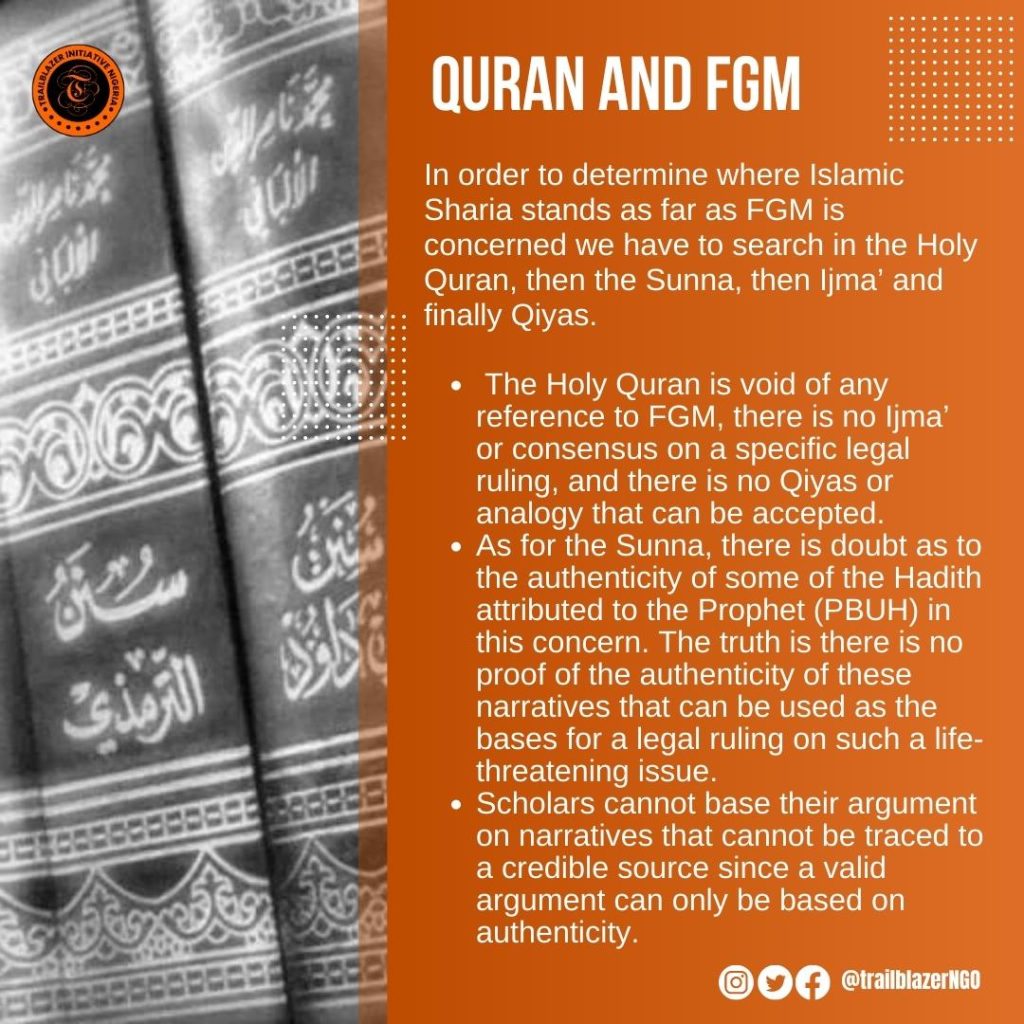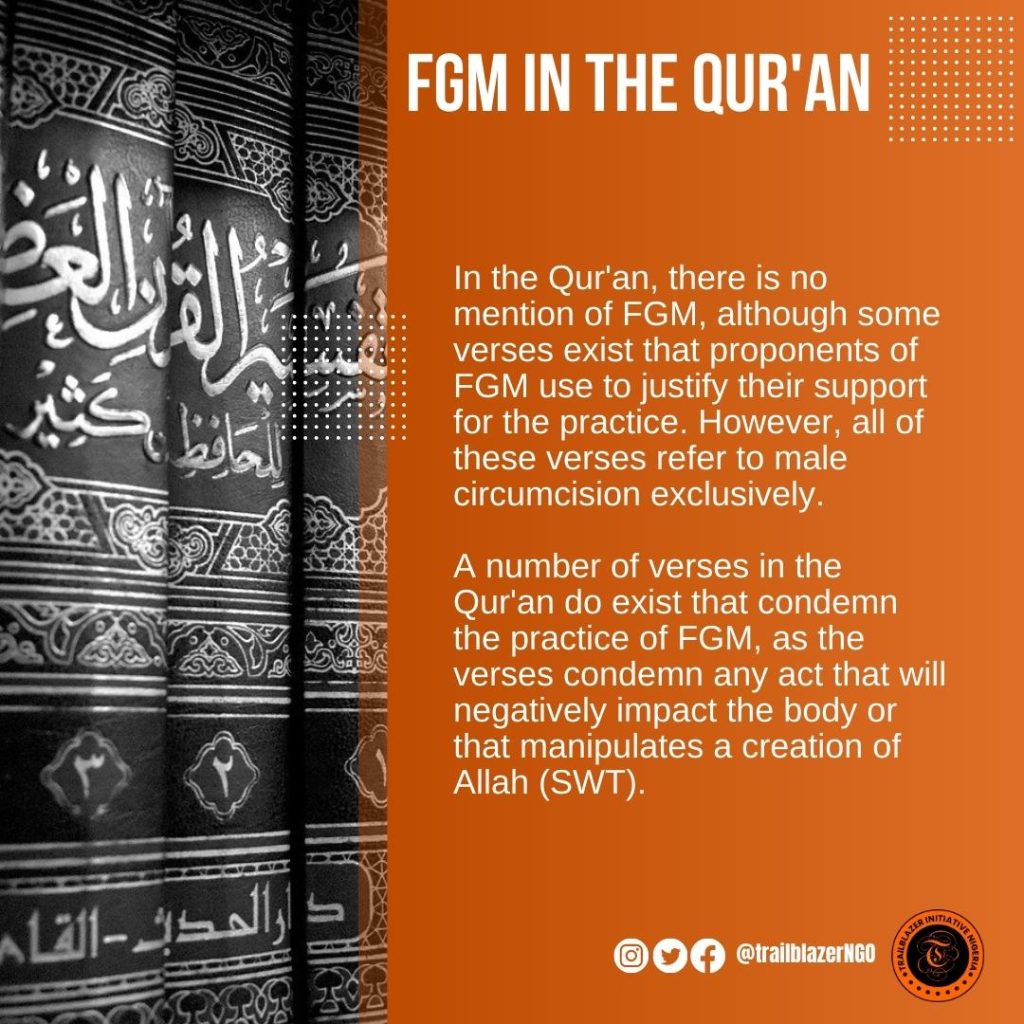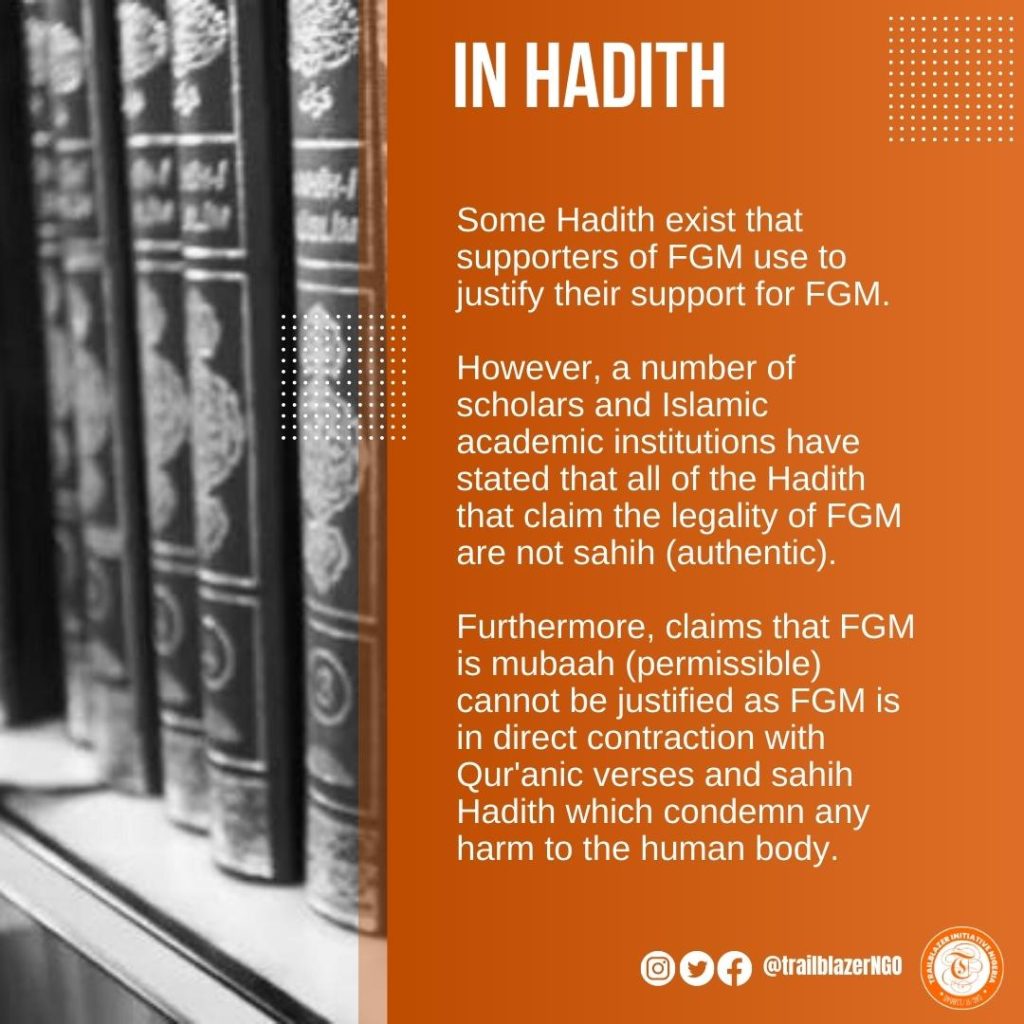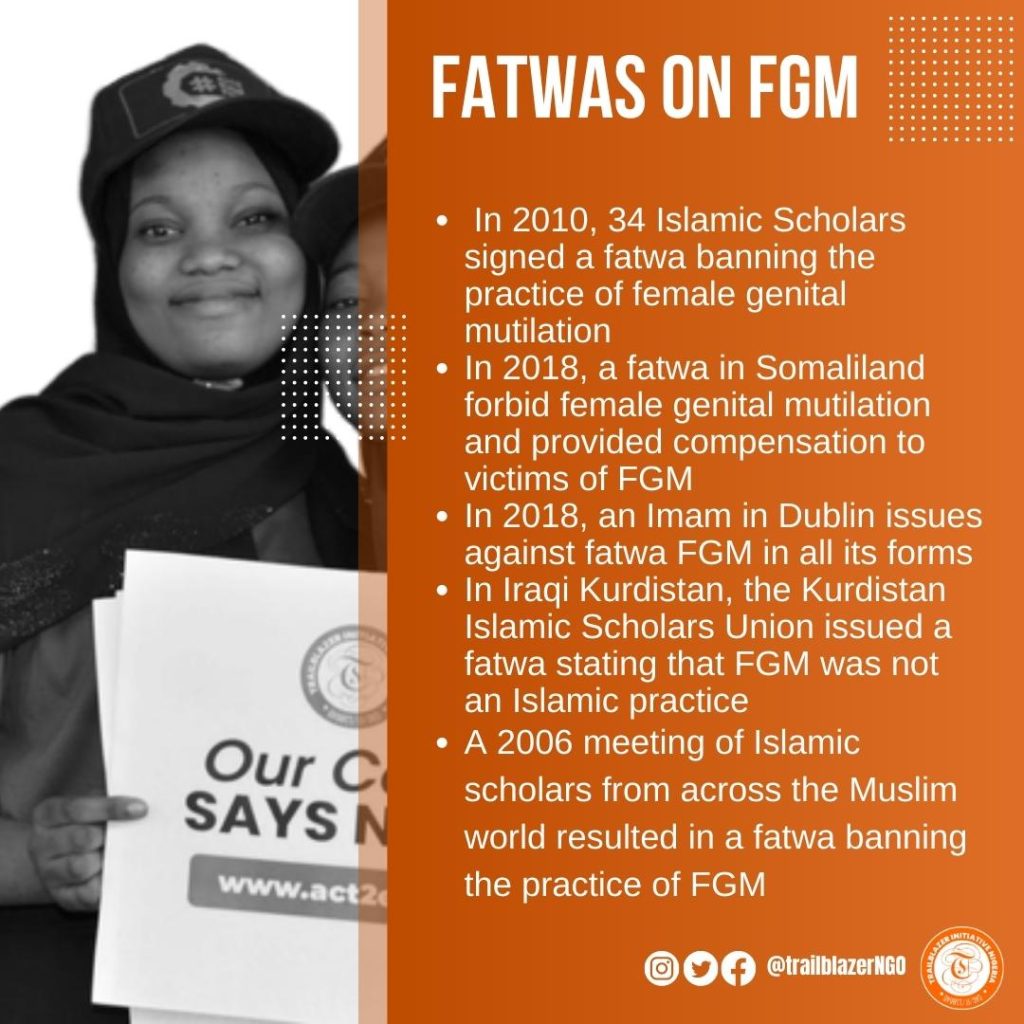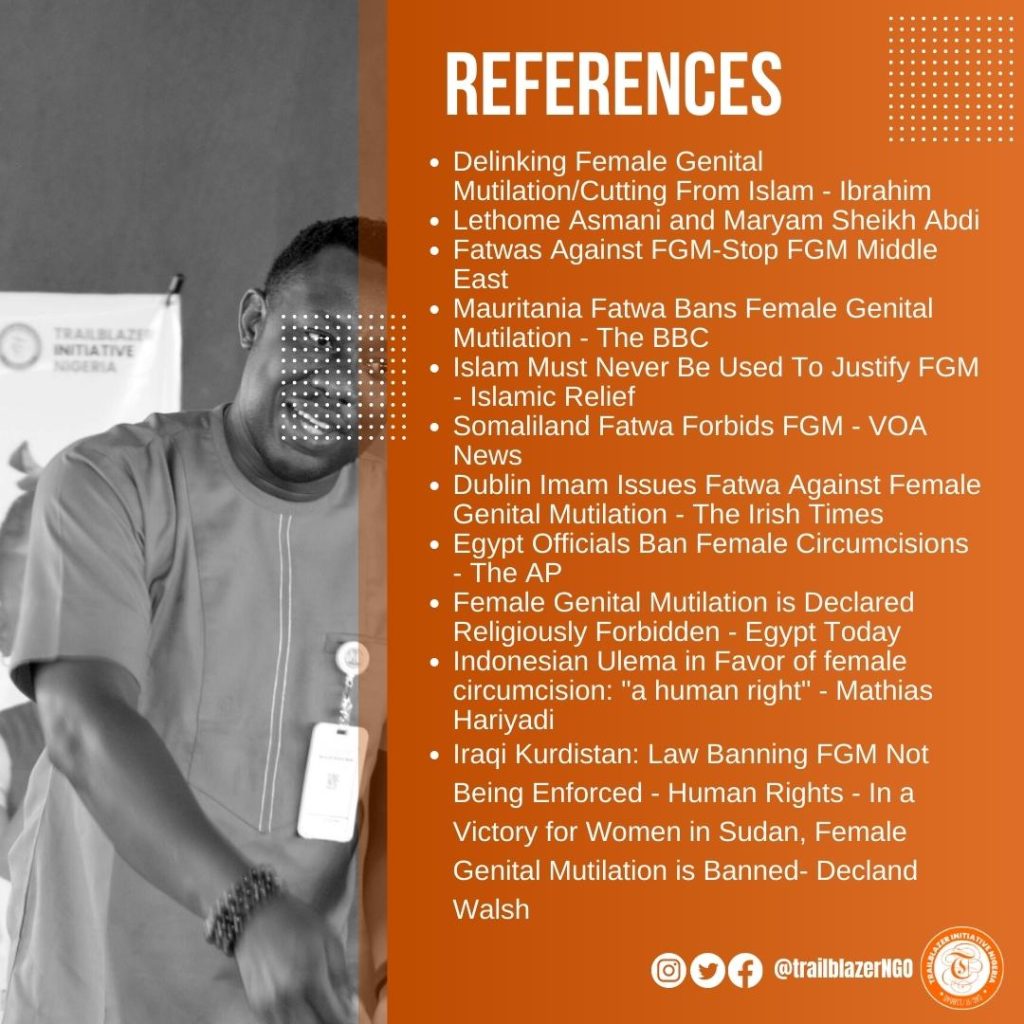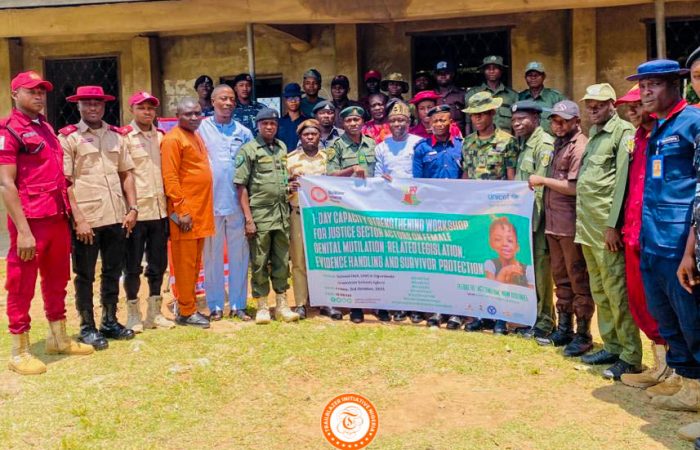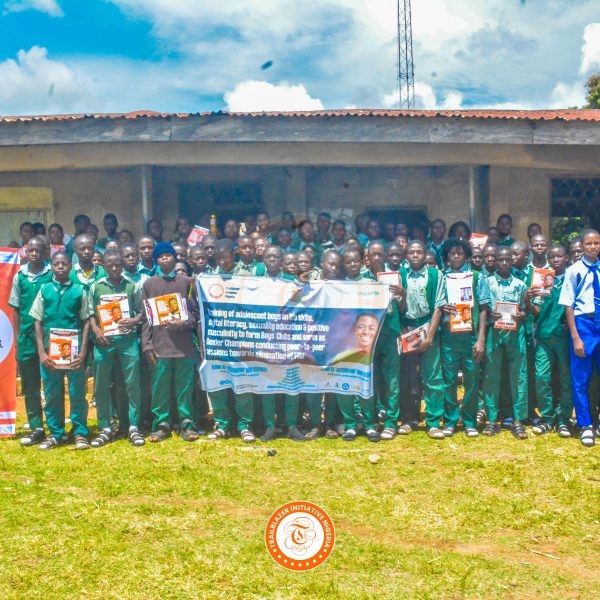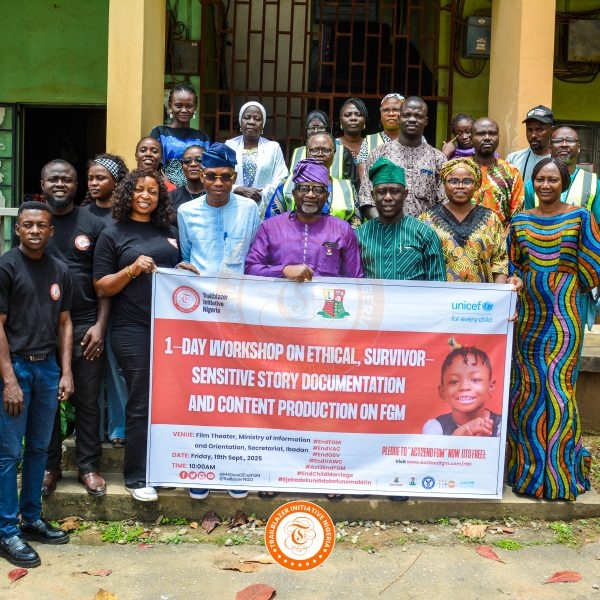by Dr. Mohamed Selim Al-Awa General Secretary of the International Federation of Islamic Scholars
Question 1: Is FGM a precept of Islam since it has been mentioned in the Sunna?
Answer 1: Islamic Sharia is derived from the following authentic sources: the Holy Quran, the Sunna (traditions), Qiyas (use of analogical arguments) and Ijma’ (juridical consensus), the four fundamental
principles of Islamic jurisprudence.
In order to determine where Islamic Sharia stands as far as FGM is concerned we have to search in the Holy Quran, then the Sunna, then Ijma’ and finally Qiyas.
- The Holy Quran is void of any reference to FGM, there is no Ijma’ or consensus on a specific legal ruling, and there is no Qiyas or analogy that can be accepted.
- As for the Sunna, there is doubt as to the authenticity of some of the Hadith attributed to the Prophet (PBUH) in this concern. The truth is there is no proof of the authenticity of these narratives that can be used as the bases for a legal ruling on such a life-threatening issue.
- Scholars cannot base their argument on narratives that cannot be traced to a credible source since a valid argument can only be based on authenticity.
Hadith on Female Circumcision
First Hadith
It is the most famous Hadith in which it is related that a woman called Om Atteya performed circumcision in Medina and that the Prophet (PBUH) told her: Do not cut severely as that is better for a woman and more desirable for a husband”. The Hadith was related by Al Hakim, Al Bayhaqy and Abu Dawood in similar wording but with weak ascription to the Prophet as is indicated by Al Hafez Zeineddin Al Iraqy in his commentary on “The Revival of Religious Sciences” by Al Ghazaly (1/148).
Abu Dawood commented on this Hadith, the version of which differed from the previous, saying: It was narrated by Obaid Allah Ibn Amr on the authority of Abdel Malik, with its meaning and ascription, but it is Da’if (weak) because the transmission was interrupted and Mohamed Ibn Hassan, one of the narrators, is anonymous. Therefore this Hadith is weak.
Imam Shams Al Din Al Haq Al Azim Abady commented on Abu Dawoud’s statement, saying: “The Hadith is weak because of the confusion about and “weakness” of the narrator, Mohammad Ibn Hassan Al Kufy”. Ibn ‘Ahdy and Al Baqihy concurred with Abu Dawoud on the anonymity of the narrator but Al Hafez Abdel Ghany ibn Said disagreed,
saying: “He (the narrator) is Mohammad Ibn Said who was crucified for being an atheist and is unreliable. (2) This narrator, Mohammad Ibn Hassan or Mohammad Ibn Said, is a liar of whom scholars have said that he has fabricated 4000 Hadith, attributing them falsely to the Prophet (PBUH).
Imam Mohammad said: Al Mansour crucified him because he was an atheist. Some contemporary scholars have traced back the ascriptions of this Hadith but they are all weak. In fact, the renowned scholar Dr. Mohammad Lotfy Al Sabbagh, Professor of Islamic Studies at the University of Riyad, Saudia Arabia, in his study on female circumcision said:
“Consider those two honorable Imams, Abu Dawoud and Al Iraqi, who have described the Hadith as weak, and disregard those who maintain it is authentic”.
Before that, Shams Aldin Al Haq Al Hazim Al Abady said: The Hadith on female circumcision was narrated in different ways, all of which are weak and distorted, and, therefore, cannot be the bases of a legal ruling.
To conclude, Om Atteya’s Hadith, in all the ways it was reported, is of no benefit.
Second Hadith
This Hadith is attributed to the Prophet (PBUH) as saying: “Female circumcision is an act of Sunna for men and an honorable act for women.” Al Hafez Al Iraqi, in his commentary on “The Revival of Religious Sciences”, described the Hadith as weak. Preceding him were Imam Al Bahiqi, Ibn Abu Hatem, and Ibn Al Barr, who also described the Hadith as weak. The Hadith is traced back to Al Haggag Ibn Artaa, who is a liar and, therefore, cannot be considered credible. Al Hafez Ibn Hagar also states in his book “Talkhees Al Khabeer Fi Takhreej Ahadith Al Rafi’e Al Kabeer” that the Hadith is weak and quotes Imam Al Baqihy as saying: “It is weak and interrupted”. Ibn Abdel Barr also says in “Al Tamheed Lima Fi Al Mawta Min Al Ma’any wa Al Assaneed” that the Hadith is reported by an unreliable person.
Al Hafez Ibn Hagar also states in the same book: “Those who claim that female circumcision is a Sunna base their argument on Ibn Maleeh’s Hadith, which is traced back to Haggag Ibn Artaa who cannot be accepted as a reliable source. Muslims have agreed that circumcision is for men.”
Therefore, the Hadith is considered inauthentic and weak, having been traced back to an unreliable source. How then can we base on it the legal ruling that it is an act of Sunna or an honorable act? It could be considered Mostahab (recommended) but even such a legal ruling necessitates authentic evidence. Moreover, it cannot be argued that Om Atteya’s Hadith provides evidence to the Hadith in question. All the evidence provided by those who attest to its authenticity is unreliable and cannot constitute the bases for a legal ruling. The argument, therefore, in favor of female circumcision, is weakened. Even if we were to consider the Hadith as hypothetically acceptable, which it is not, the ruling on circumcision does not put males and females on an equal footing, for while circumcision is an act of Sunna for males, it is an honorable act for females. It is as if Islam deemed it necessary to regulate this practice which was already performed by the Arabs prior to the advent of Islam. This is clear in the very detailed and fine wording of Om Atteya’s Hadith that says: Do not cut severely….
Moreover, it has come to my attention that, in fact, Om Atteya’s Hadith contains a contradiction – the first part of the Hadith contradicts the last part. While the first part makes circumcision mandatory; the second part refers to a little part (of the external genitalia) that should not be removed because “it is better for the woman and more desirable for the man.” So why God’s creation shouldn’t remain unaltered to complete the woman’s fairness and the man’s satisfaction.
Furthermore, the two Hadith, if hypothetically credible, do not carry further interpretations. Had the Prophet (PBUH) wanted to put men and women on an equal footing, he would have said: “Circumcision is an act of Sunna for men and women” or “circumcision is an act of Sunna” without elaborating, in which case it would be a general rule.
Accordingly, it would be appropriate to accept as true the statement by Imam Ibn Al Munthir, a prominent scholar in Fiqh and Hadith of the 4th Century Hejira, concerning circumcision, who said: “there is no evidence to refer to, nor a Sunna to follow.”
The same opinion was held by Sheikh Mohammad Rasheed Reda in reply to a question published in Al Manar magazine.
Imam AlShawkany maintains that “the Hadith fails to provide evidence since the term Sunna, used by laymen, is more general than the term used by legists. There is no evidence that circumcision is mandatory for males, although it is clear that it is an act of Sunna…. All natural dispositions are not obligatory.” (Nayl Al Awatar 1/135).
The renowned scholar Sayed Sabeq said in his famous work “Fiqh Al Sunna” : Hadith mandating female circumcision are weak and inauthentic.
Third Hadith
This Hadith, reported on the authority of Abdullah Ibn Amr, ordered the women of Al Ansar (the Prophet’s supporters in Al Medina) to be circumcised. The Hadith is weak as Al Shawkani (10) points out that, as narrated by Abu Naim, one of the narrators was Mandal Ibn Aly who is considered a weak narrator and, as narrated by Ibn Ady, another source for the Hadith, one of the narrators was Khalid Ibn Amr Al Qurashy, who is an even weaker narrator.
Fourth Hadith
The authentic Sunna contains a Hadith on the authority of Aisha attributed to Prophet Mohammad that states: Should the two circumcised organs meet, then Ghusl (ablution) is necessary”. Malik, Muslim, Al Turmuthi, Ibn Hajeh and others have included this Hadith in their writings of the Sunna. The point to consider here is that the Prophet (PBUH) said the “two organs”, meaning the male and female organs. This may be used by some as an argument in support of female circumcision. However, mention of the two organs does not mandate female circumcision nor does it legitimize it. In fact, in the Arabic language two things or persons may be given one quality or name that belongs only to one of them because that quality or name is more famous, stronger, more able, more prominent or more easily pronounced. This quality or name may or may not be that of a female. There are many examples of this duality:
The name Al Omaran (the two Omars) refers to Abu Bakr and Omar; Al Qamaran (the two moons) and Al Nayran (the two fires) to the sun and the moon, although the moon does not emit any light but reflects the light of the sun; Al Isha’an (the two evenings) to the Maghreb (sunset) and Isha (evening) prayers; Al Zuhraan (the two noons) to the Zuhr (noon) and Asr (afternoon) prayers; Al Aswadaan (the two black things) to dates and water, although water is colorless; Al Abawan (the two fathers) to the father and mother; Al Bahran (the two seas) as used in the Holy Quran refers to the river and sea (“And the two seas are not alike, this one is fresh, sweet, good to drink, this other bitter, salt”. Fatir: 12); Al Marwatan refers to Al Safa and Marwa hills in Mecca; Al Asfaran (the two yellow things) to gold and silk, giving priority to the color of gold although silk comes in various colors. All these examples of the duality
used in the Arabic language are known to scholars.
Thus, the use of the words “the two organs” in this authentic Hadith does not provide legitimacy to female circumcision since they were used only as a form of duality that gives priority to the stronger, i.e. the male.
Moreover, the subject matter of the Hadith is Ghusl (ablution) and what makes it a requirement, rather than circumcision. In addition, all scholars have interpreted the Hadith to mean that the mere meeting of the (male and female) sexual organs does not require Ghusl unless sexual intercourse (penetration) takes place. Hence, if the literal meaning of the Hadith is unacceptable, how then can its implications be acceptable?
Fifth Hadith
According to Al Shaykhan, Abu Dawoud, Al Turmuthi, Al Nisaai, Ahmed, and Malik in Al Mawta, the Prophet (PBUH), on the authority of Abu Huraira, said: “Acts of natural disposition are five: circumcision, removal of the pubic hair, shaving of the moustache, cutting of the fingernails, and plucking of the armpit hair.”
On the authority of Aisha and other Companions of the Prophet, the acts of natural disposition are ten including shaving the moustache and growing a beard.
This authentic Hadith does not provide evidence in support of female circumcision since shaving the moustache and growing a beard are acts pertaining to males only. The original narration of this Hadith is cited by Ibn Malik in Al Mawta on the authority of Yahya Ibn Said that Abraham, peace be upon him, was the first to be circumcised . This is
agreed upon by Muslims scholars. It was also cited by Ibn Abdel Barr in Al Tamheed who said that it is a Sunna that should not be neglected by males. The same author refutes the validity of female circumcision as mentioned previously.
It would therefore be erroneous to regard female circumcision as an act of natural disposition. In fact, only male circumcision can be regarded as such for the term circumcision as it appears in the Arabic language and as it is used by scholars refers to male circumcision, not female circumcision for whom the term Khefad (reduction) is used.
Another argument that refutes the legitimacy of female circumcision is based on the fact that there is no evidence that shows that the Prophet (PBUH) had any of his wives or daughters circumcised. Had female circumcision been among Islam’s precepts or principles, the Prophet would have been the first to apply the practice on his wives
and daughters.
Thus, it is clear that the authentic Sunna does not contain evidence that supports the legitimacy of female circumcision and that the Hadiths quoted to support the practice are weak and do not constitute a basis from which a legal ruling can be derived. In fact, female circumcision is but a custom or tradition which Islam left to time and medical progress to eliminate.
Question 2: The different schools of Islamic jurisprudence hold different opinions on female circumcision. The Imam Shafii school upholds that circumcision is obligatory for both males and females; the Imam Ahmed Ibn Hanbal school considers circumcision obligatory for males and an honorable act for women; and the Imam Abu Hanifa and Imam Malik schools regard circumcision as a Sunna for males and an honorable act for women. However, none of the schools prohibits the practice. Therefore, can we say that circumcision is permissible since it has not been prohibited?
Answer 2: Scholars have definedFiqh(Islamicjurisprudence)asknowledge of the canonical laws that are based on detailed evidence, that is the Holy Quran, the authentic Sunna, Ijma’ according to established conditions and acceptable Qiyas.
The jurisprudent is required not only to be knowledgeable of Fiqh and Sharia but also to be strongly in touch with reality and to give his opinion, pass judgment or teach people accordingly. The work of the jurisprudent is a human task carried out by specialists in Sharia who provide Muslims with the necessary guidelines in matters that concern them. However, the words of the jurisprudent are not “Sharia” and cannot be regarded as a “religion”. They are an
understanding of the stipulations of Sharia, adapting them to reality. The jurisprudents are not infallible and may give correct as well as erroneous interpretations. The qualified jurisprudent is rewarded twice if correct and once if erroneous. Imam Shafii says: “My opinion is correct but it may be wrong; the opinion of others is wrong but may
be correct.”
Moreover, not all the themes in Fiqh and Hadith are purely religious. In fact, many deal with medicine, nutrition, clothing and the like. As far as non-religious issues are concerned, the Prophet (PBUH) set a good example when he ordered the Muslims to leave the pollination of palm trees to nature and when the trees did not bear as much fruit as
expected he said: “You have more knowledge of your worldly affairs.”
It follows then that the jurisprudent should deem people’s knowledge of their worldly maters as correct as long as it does not violate an authentic stipulation.
All the medical issues contained in Fiqh books and in Hadith pertain to worldly matters for which jurisprudence is sought after medical and scientific opinion is given. The physician’s opinion is related to reality and the jurisprudent adapt his ruling to reality. The jurisprudent’s opinion is based on that of the physician, not the other way around.
If we apply the previous principles on FGM, then the person who guides people and elucidates on such a sensitive issue that affects the lives and future of our girls should meet the qualifications of the jurisprudent, not the Da’iya (preacher), interpreter or orator. In other words, he should have comprehensive knowledge of the various Islamic sciences, especially Fiqh. He should also have detailed information about the practice in terms of its history and its social and culture aspects, as well as scientific information about the organs that are removed, including their nature
and vital functions, and consider, from a religious perspective, the effect of their removal on legitimate sexual enjoyment.
In this way, the jurisprudent will provide an opinion based on scientific facts and not on popular culture.
The scientific opinion on FGM is clear. It is the total or partial cutting of the female’s external reproductive organs which deprives the body of its natural functions and of legitimate physical pleasure. In short, it is a social practice to control women and constitutes a violation of her rights. How then can today’s jurisprudent, in the prevalence of all this advanced scientific and social knowledge, allow this practice and defend its continuity?

